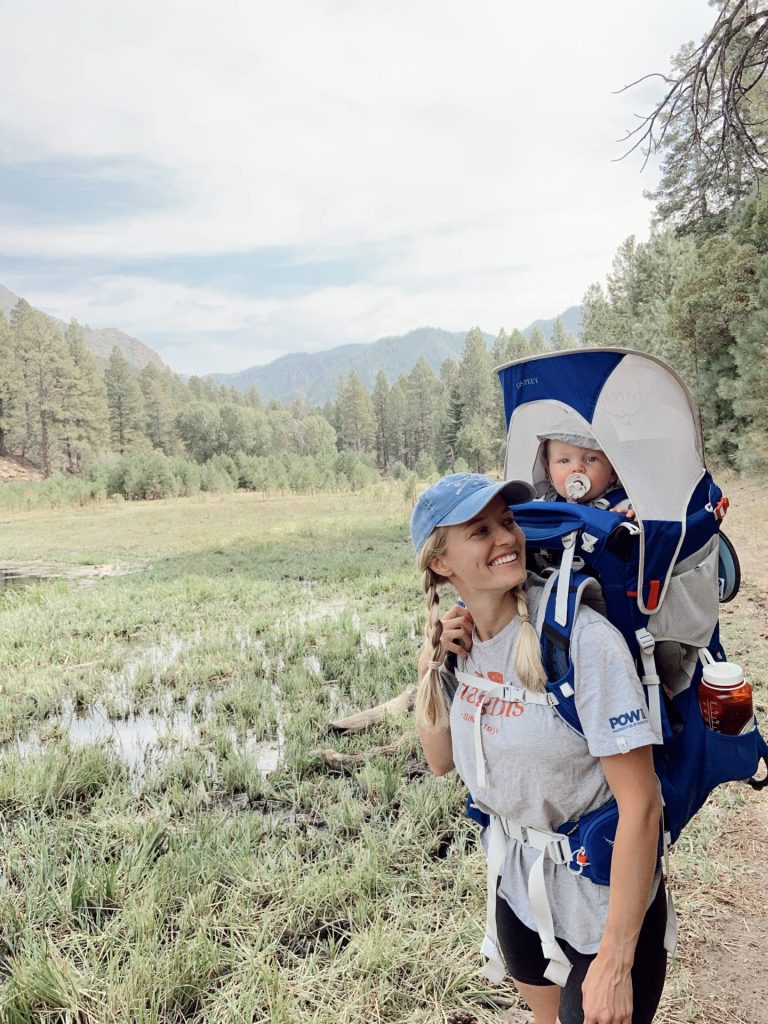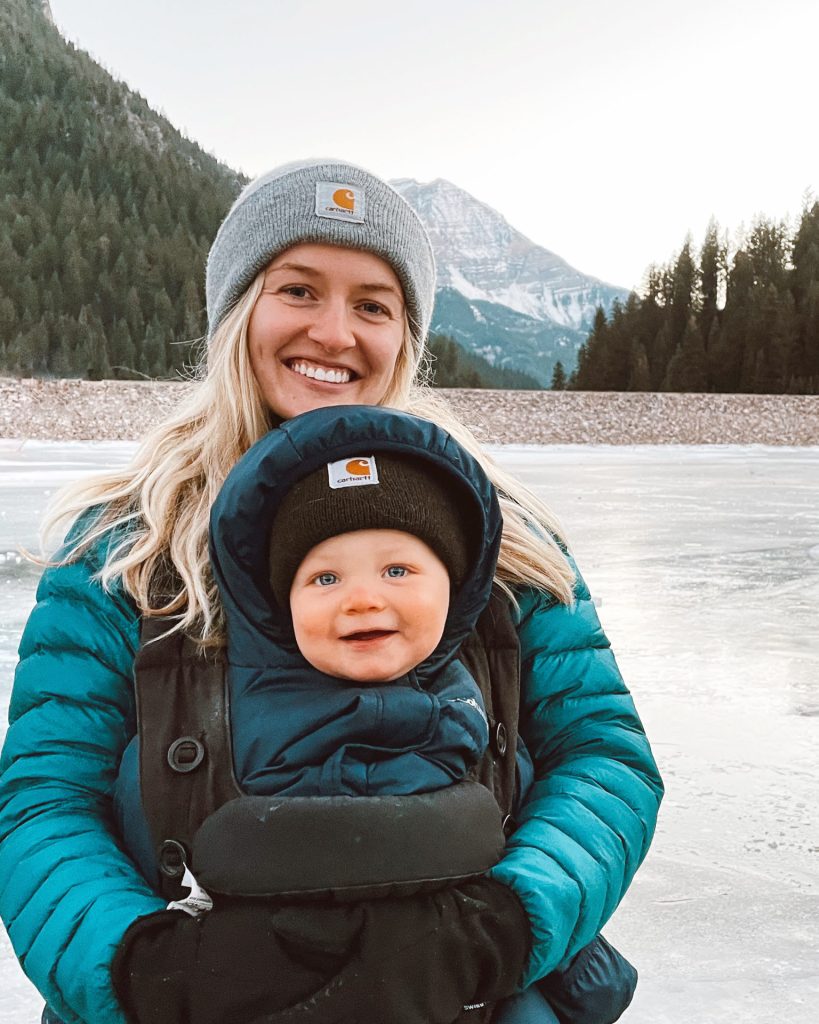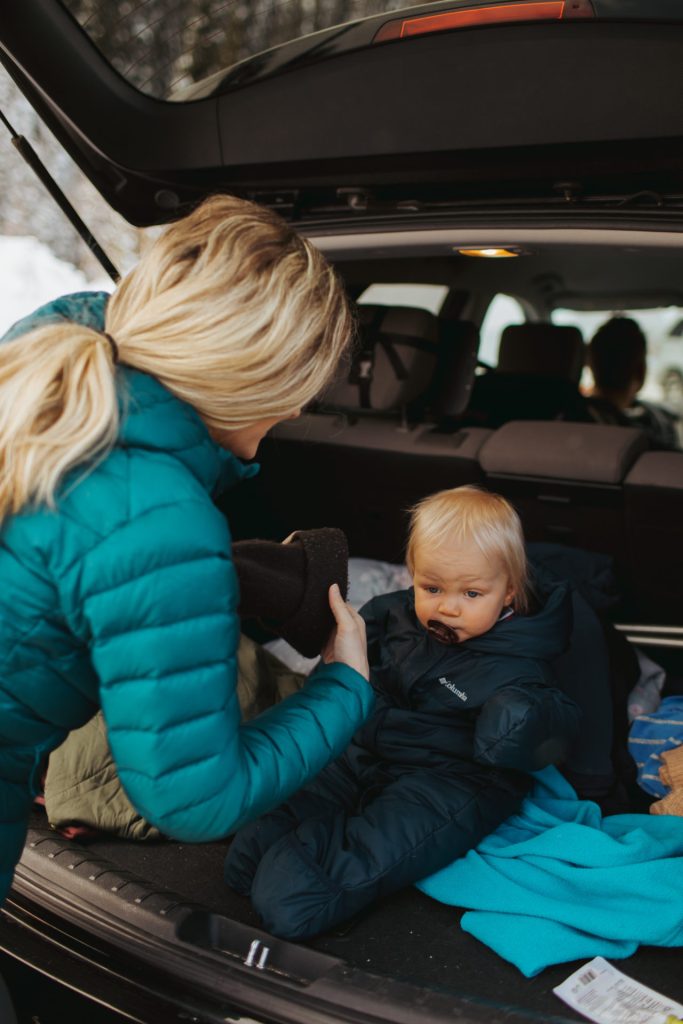In this post I am sharing 13 tips for hiking in the rain as well as the best gear for hiking in the rain for adults and kids!
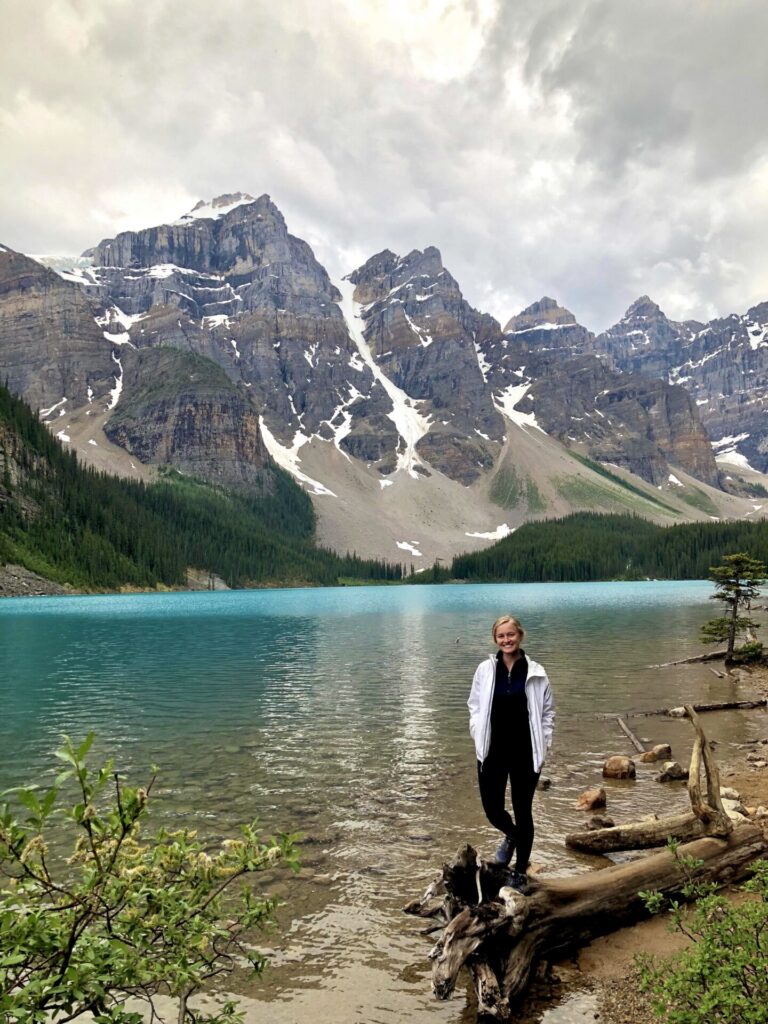
As someone who has lived in the desert for my whole life, I have always enjoyed rain storms. I love to take my kids outside when it rains because I know how fleeting they can be. Since moving to Utah, I have enjoyed many more rainy days and had been caught more times than I would expect in an unexpected rain storm while hiking.
I often times will choose to hike on a day that it is going to rain because I love the sounds, the smells, and the solitude a rainy hike provides. I also like to teach my kids that all weather can be enjoyed. Along with that makes sure that we have good gear for hiking in the rain. A rainy hike can quickly turn into a negative or even dangerous experience if you are not prepared.
Here are my top tips and the best gear for hiking in the rain!
1. Check the Weather – Don’t Hike if There is Lightning
You should always check the weather before you go out on a hike, and be prepared for it to change. If there is going to be lightning, DO NOT go out and hike. You are much more likely to be struck or hurt by lightning out on a hiking trail than inside your house.
If you do happen to be out hiking and lightning occurs, here are some things to do to stay safe:
- Seek Shelter Immediately: If possible, seek shelter in a building or a hard-topped vehicle. These are the safest places to be during a lightning storm. Avoid small shelters like picnic pavilions or open structures, as they do not provide adequate protection.
- Avoid High Ground: If you’re on a ridge or high point, move to lower ground as quickly and safely as possible.
- Avoid Isolated Trees and Tall Objects: Stay Away from Tall Structures like isolated trees, poles, or metal objects, which can attract lightning. If you’re in a group, spread out (at least 20 feet apart) to reduce the risk of multiple injuries.
- Crouch Down: If you’re caught in an open area with no shelter available, crouch down with your feet together, and your head lowered. Place your hands over your ears to minimize hearing damage if lightning strikes nearby. You’ll also want to keep away from bodies of water like lakes, rivers, and streams.
- Avoid Metal Objects: Stay away from metal objects, such as hiking poles, backpacks with metal frames, or any other conductive materials.
- Stay Inside Once Sheltered: Remain in shelter for at least 30 minutes after the last sound of thunder.
- Know the Lightning Safety Position: While it’s a last resort, assuming the lightning crouch (crouching with feet together and balancing on the balls of your feet) reduces your profile and minimizes contact with the ground.
2. Avoid Wearing Cotton
Cotton, while breathable and comfortable, holds onto moisture when it gets wet. That means it stays wet and will chill your body, potentially leading to hypothermia especially when worn against your skin as a base layer. It’s best to wear moisture wicking materials, especially if they are right up against your skin.
3. Dress in Layers
Layering is key for a rainy hike because not only can the weather can change while you’re out, but your layering needs might change as your exert energy hiking around. By wearing layers, you can easily adjust as needed—peel one off if you’re getting too warm or add one when it cools down. Start with a base layer that wicks away sweat, throw on something warm in the middle if it’s a really cold day, and top it off with a waterproof jacket to keep the rain out.
You don’t need to wear all these layers at once, but you can keep them in your backpack and use them as needed.
Gear for Hiking in the Rain
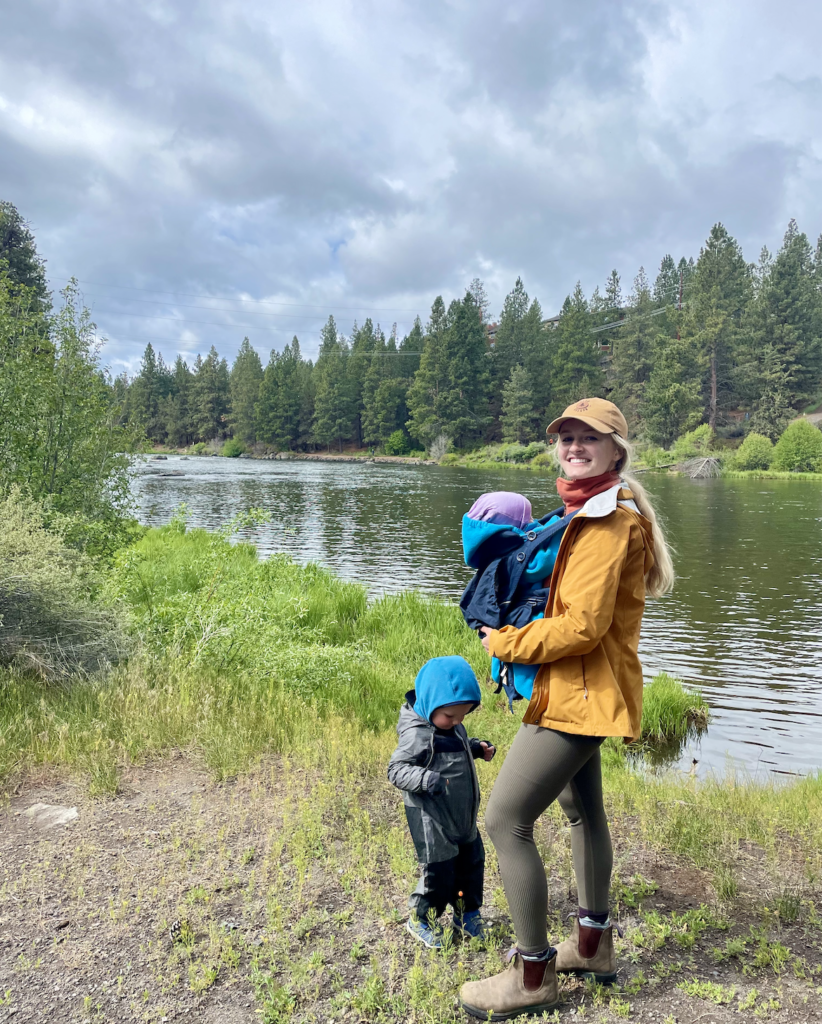
4. Wear a Waterproof Rain Jacket
On a rainy hike, a waterproof rain jacket is essential piece of gear for hiking in the rain to make sure you stay dry and comfortable. This is crucial for maintaining your body temperature and avoiding hypothermia. Make sure you know the difference between waterproof and simply water resistant.
A waterproof jacket is designed to keep rain completely out, even during heavy downpours, while still allowing moisture from sweat to escape. On the other hand, a water-resistant jacket can only handle light rain or drizzle for a short period before soaking through, leaving you cold and wet.
If you live in an area that only gets a drizzle every now and then, a water resistant jacket will likely suit your needs just fine! And it will be more breathable. But a waterproof jacket is what is going to keep you totally dry if it does really pour.

REI Rain Jacket: Often times a rain jacket is all you need to protect you from the elements. I love this inexpensive rain jacket from REI.

Arc’teryx Beta LT: I actually have the Arc’teryx Zeta SL, but it looks like it’s being discontinued. This is the closest jacket too it and it’s an amazing all mountain jacket. It’s totally waterproof, even the zippers, and will do a great job blocking that wind.
5. Pick Up a Pair of Rain Pants
Rain pants are a game-changer for hiking in wet weather. I picked up a pair before a trip to British Columbia, Canada, and was so grateful for them. They keep your legs dry and warm, which is key to staying comfortable on the trail. Paired with a waterproof jacket, they block out the rain and prevent your clothes from getting soaked. When I know it will be a rainy hike, I find that rain pants are an essential piece of gear for hiking in the rain
Plus, they protect your pants from mud and puddles, making post-hike cleanup a breeze.
REI Rain Pants
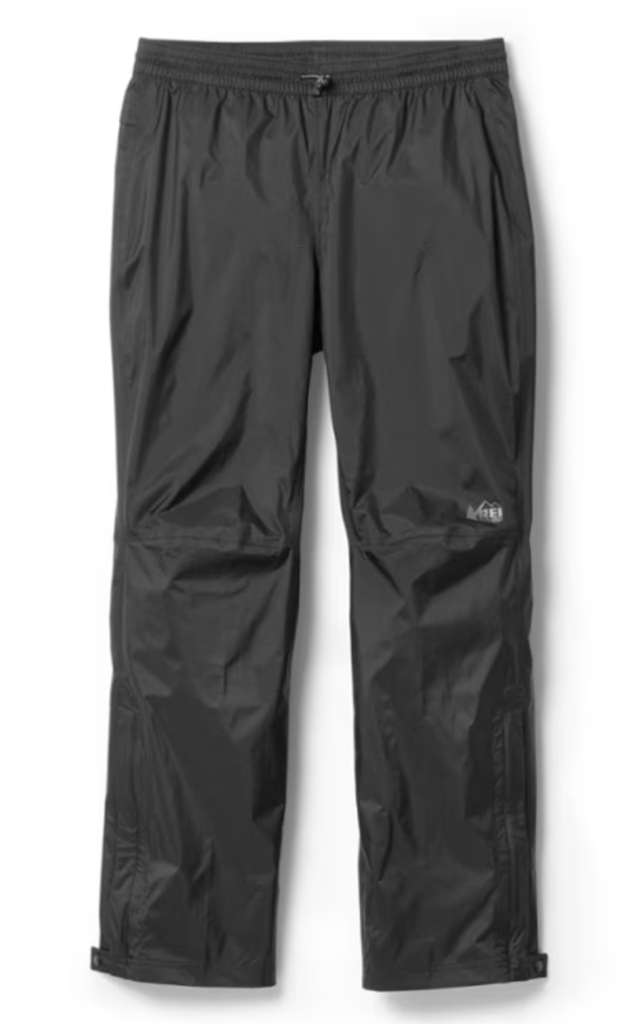
REI Trailmade Rain Pants: I have these rain pants and they are waterproof, breathable, and easy to move in. I like that the bottoms can be wide to cover my shoes or I can cinch them if it’s muddy. They’re lightweight and don’t overheat me too much.
Frogg Togg Rain Pants
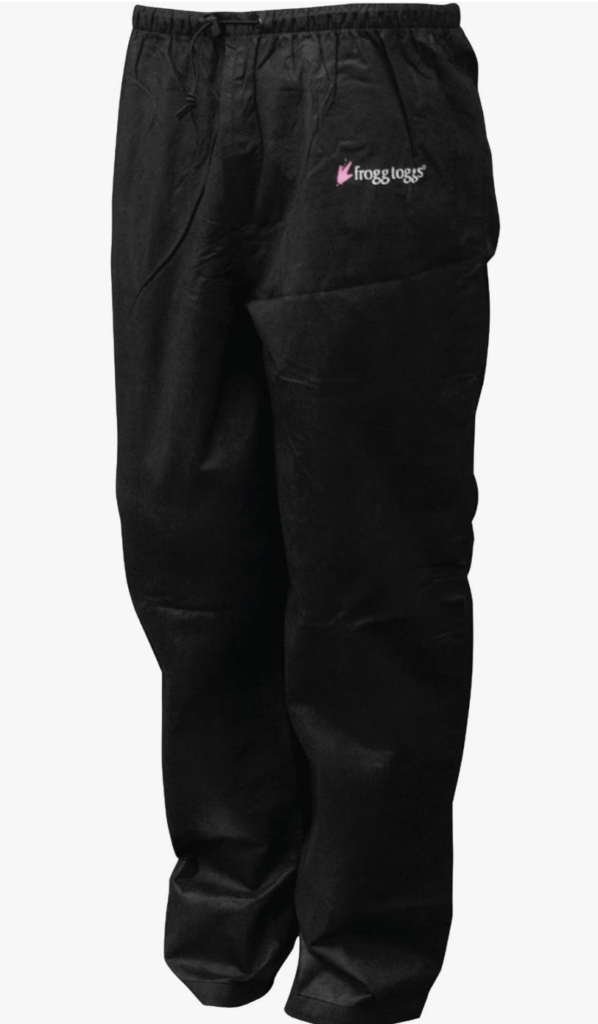
Frogg Togg Rain Pants: These rain pants are an inexpensive, get the job done rain pant. My husband wore the Frogg Toggs rain set on our Canadian canoe trip and they kept him dry in torrential down pours. They are not going to be the most durable pant you wear, but if you only need them a couple times a year, they’re a great option. I just wouldn’t recommend doing a lot of bush whacking in them.
6. Wear Waterproof Hiking Shoes
I typically enjoy hiking in a non-waterproof trail runner because if they do get wet inside, they dry faster. But if I know it’s going to be a really rainy hike, I will opt for a waterproof hiking shoe.
They keep your feet dry and comfortable, even when you’re trudging through puddles or wet trails. Dry feet mean fewer blisters and less chance of getting cold, so you can focus on enjoying the hike. One thing to make sure of if you are wearing a waterproof shoe, don’t get them wet on the inside. You don’t want to cross rivers or submerge them in a lake if possible. They take much longer to dry as the inside is not waterproof and they are not as breathable as non-waterproof shoes.
*If a shoe has the letters GTX in the name, that stands for Gore-tex which is a waterproof material, so those shoes will be totally waterproof!
Danner Inquire Chukka Hiking Boots
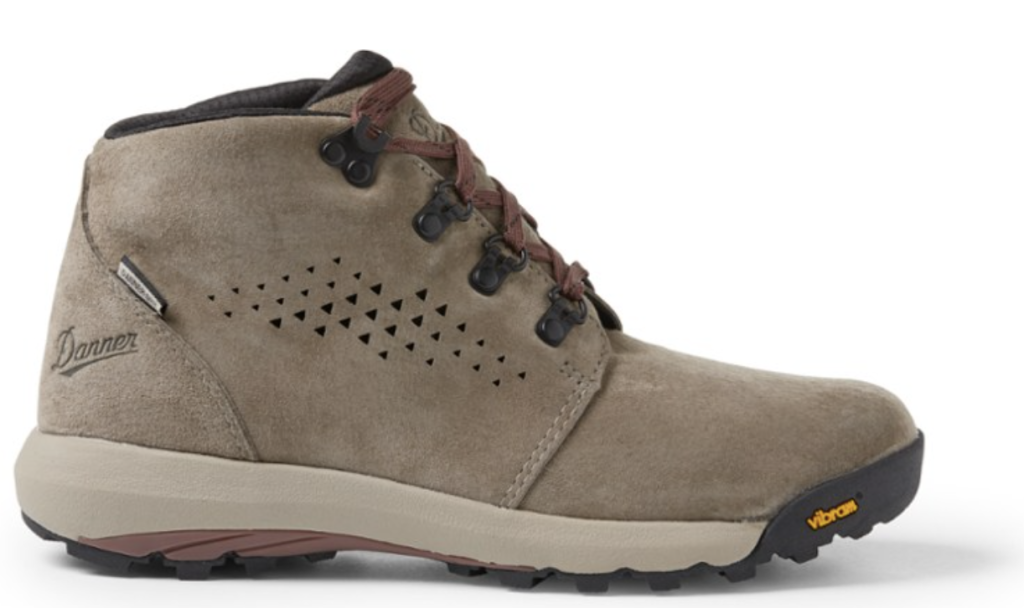
Danner Inquire Chukka Hiking Boots: These are my current go to fall hiking boot! They are waterproof and not too stiff which I like. Thy are a mid rise boot and do a great job of keeping my feet dry without overheating.
Salomon Speedcross Gore-tex

Salomon Speedcross GTX: If you’re looking for a waterproof trail runner, these have been my favorites for years. The large lugs help with stabilization on muddy, uneven trails, and they’re just comfortable. They’re lighter weight than a boot which is great for trail running, but also just quick and easy hiking.
You can browse other waterproof hiking shoes here!
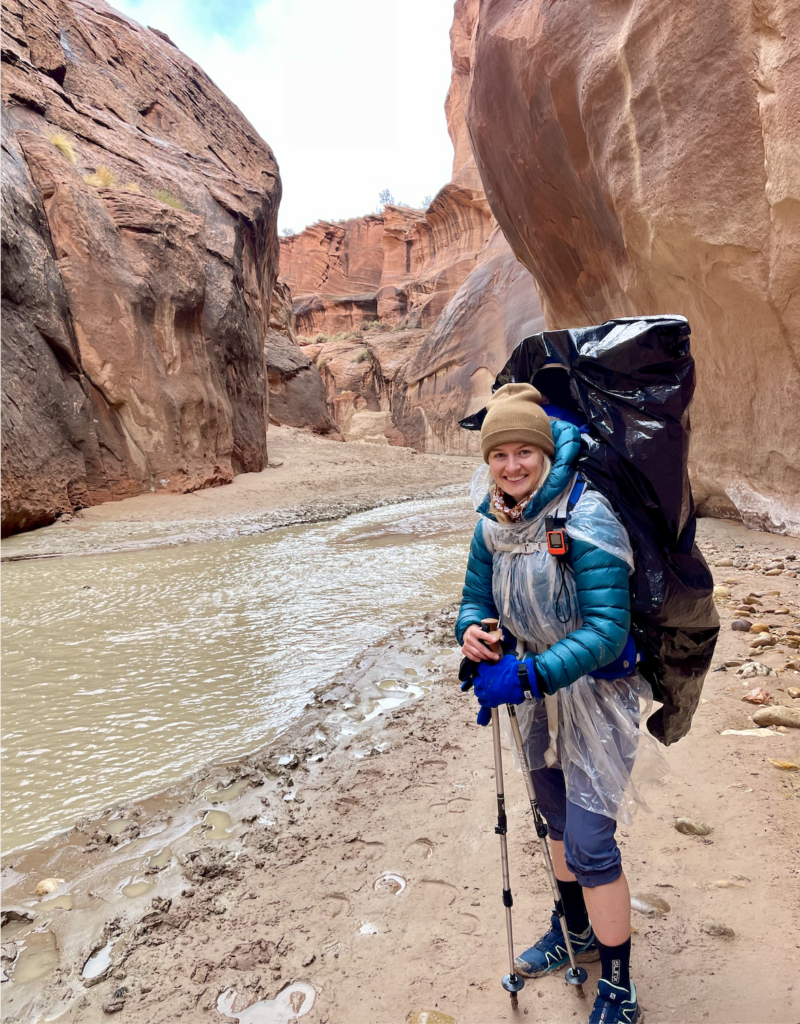
7. Wear Wool Socks
If you’re still hiking in cotton socks, let me change your life. Wool socks are a hiker’s best friend, and such an important piece of gear for hiking in the rain. They keep your feet warm even if they get damp, and they wick moisture away, helping to prevent blisters. Wool is naturally breathable and dries faster than cotton, so your feet stay comfortable on the trail. Plus, they’re durable and don’t get holes as quickly as other materials.

Smartwool socks: I have worn Smartwool socks for years. There are a lot of different heights and thicknesses, but I prefer the hike light crew length for my hikes. If you want something a little thicker, I would try the Smartwool Full Cushion Hiking sock.
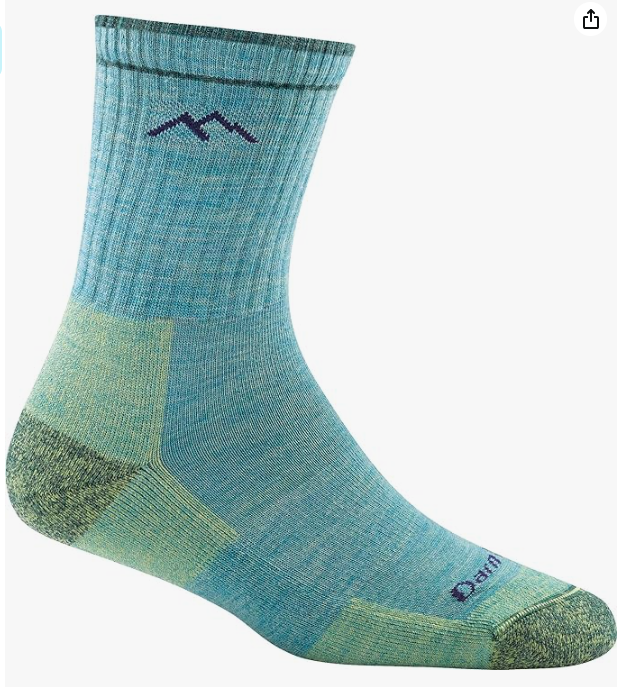
Darn Tough Socks: Darn Tough socks are another amazing wool sock you can’t go wrong with. They have an amazing warranty where if you wear a hole in your socks, you can send them in for repair or they will send you a credit to purchase a new pair.
8. Find Rain Gear with Good Ventilation
One thing about rain gear is that it’s not very breathable. This is great for keeping the moisture out, but it can quickly lead to you feeling a bit clammy or sweaty, especially if you’re exerting a lot of energy.
Look for rain jackets with “pit zips” which are just zippers in the armpit, and rain pants that are thin or have thigh zips.
9. Trade Your Down Jacket for Synthetic
Like cotton, down is another material you should avoid on a wet hike because it loses its insulating properties when it gets wet. Down absorbs moisture and clumps together, leaving you cold and without proper insulation. Synthetic jackets on the other hand maintain their warmth even when damp. They dry more quickly and are better suited for wet, rainy hike.
These are jackets I like to wear under my waterproof rain jacket if it’s a colder day.
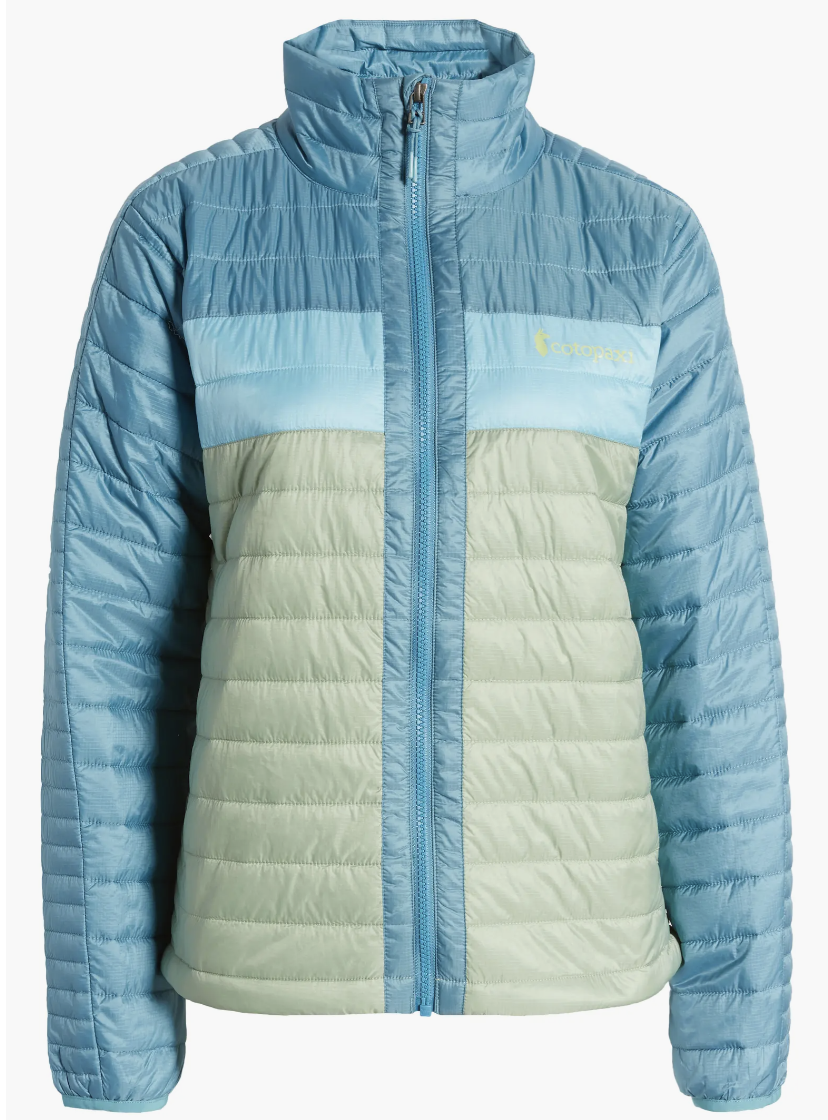
Cotopaxi Capa Jacket: I love this synthetic jacket. It’s lightweight but warm and I am able to layer under it without feeling super constricted. Synthetic insulated jackets are a great option in the winter because even if they get wet, they still help keep you insulated, unlike down.

REI Trailsmith Fleece Pullover: This fleece jumpsuit is one of my favorites. It’s soft, warm, and the vintage look is very cute. I also love that it has zipped pockets. I bought mine in a size up for a more oversized fit but if you plan on mostly layering with it, I would buy your regular size.
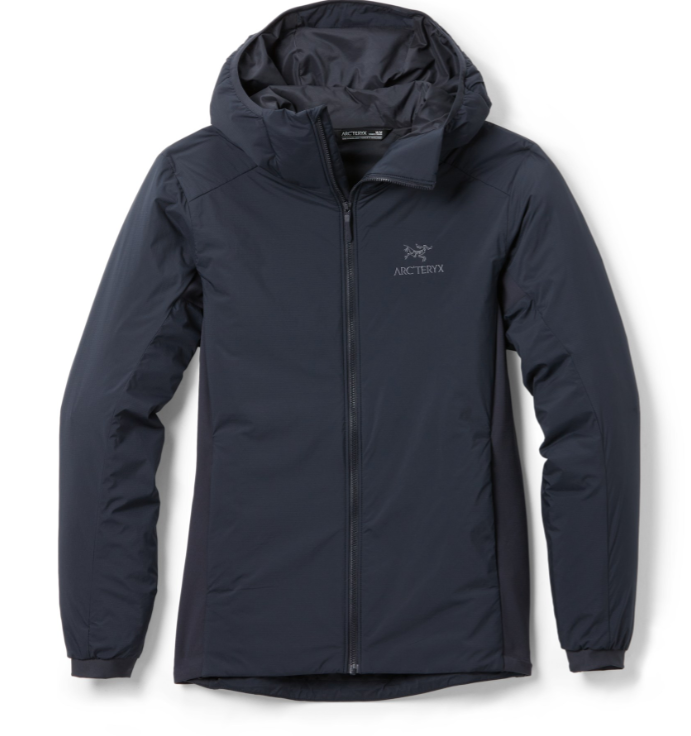
Arct’eryx Atom LT: Of all of these midlayers, I have had this jacket the longest–about 6 years. This is probably my most versatile and worn jacket. I convinced my husband, both of my parents, and even my brother in law to get this jacket and they all LOVE it.
It is a synthetic jacket but it doesn’t have seems running up it with small sections of insulation. Instead, it is just one large sheet of insulation and which is great because it reduces cold pockets. This has been my go to hiking jacket for years and I know it will be for years to come.
Gear for Hiking in the Rain with Kids
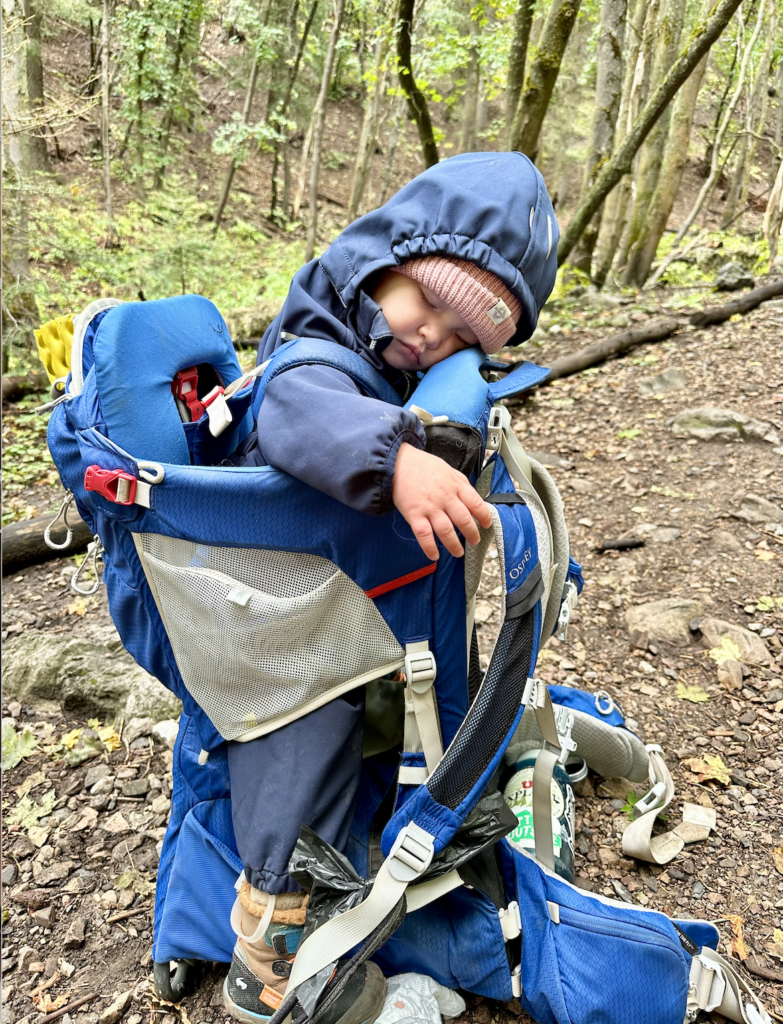
10. Bring a Rain Cover for Your CHild Carrier
If you are carrying your baby or toddler on your rainy hike, it can be tricky to keep them and your carrier dry. A rain cover for your child carrier is a great piece of gear for hiking in the rain to keep your little one completely dry. I have found 2 covers that work really well in the rain and highly recommend them!
Framed Carrier Rain Cover
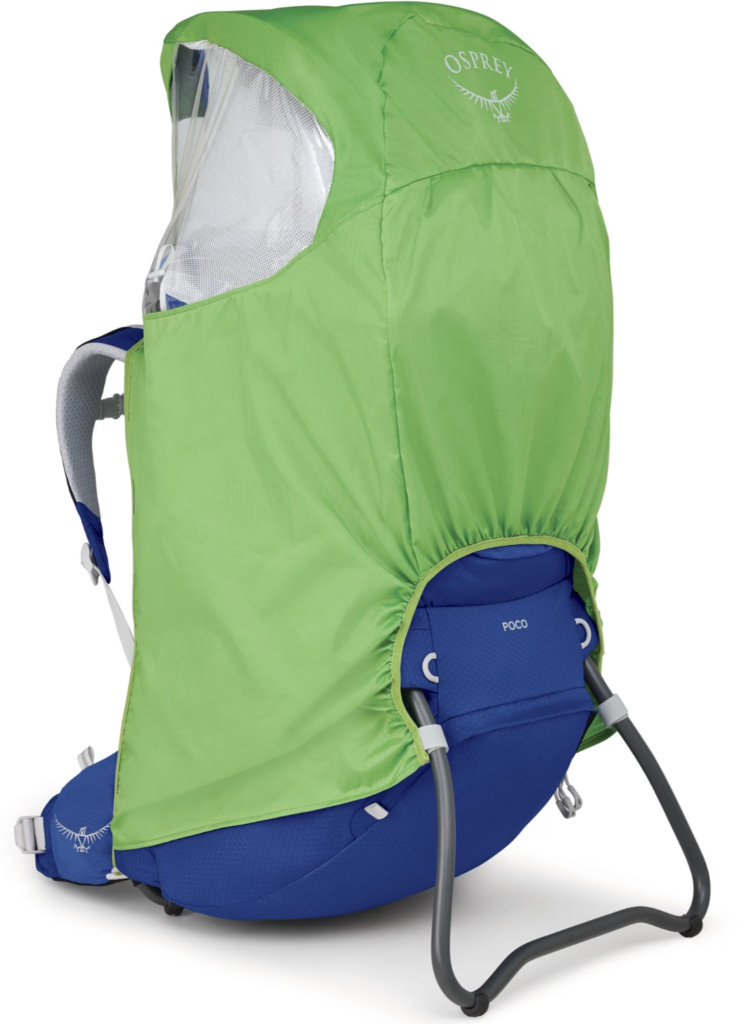
I have used the rain cover for our Osprey Poco Plus on many rainy hikes. It does a great job at keeping my baby inside dry as well as my pack. Just be aware, it also adds some warmth so you may need to take a layer or two off of your baby or toddler when you put it on. I like to check on them regularly to make sure they aren’t getting too hot.
Framed Carrier Rain Cover Links
Soft Structured Carrier Rain Cover
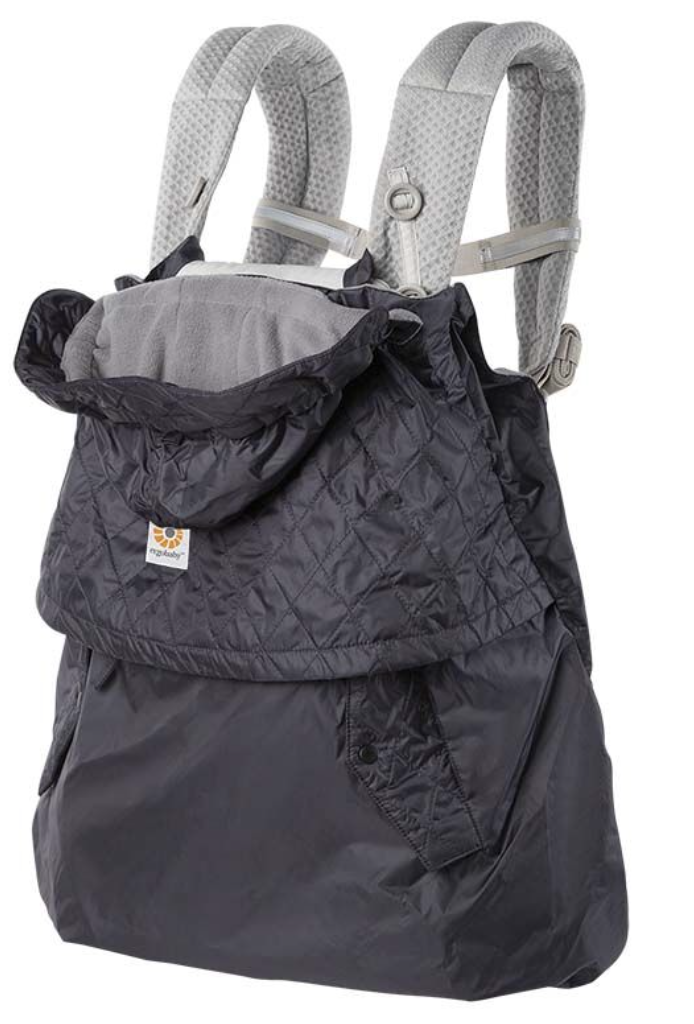
This Rain Cover by Ergobaby is the perfect cover to keep your little one dry. It fits on most soft structured carriers (not just Ergobaby ones). It does come with a hood that you can take off and switch around. That means your baby can wear the hood if they are facing you or facing out.
They also have an insulated All Weather Cover if you are out in chillier temperatures.
11. Try Out a Jumpsuit for Your Kids
Outdoor playsuits are hands down my favorite thing to dress my kids in on a rainy or muddy hike. They stay totally dry, can still play in the mud, and I don’t have to worry about them getting cold or their clothes getting ruined. There are different levels of waterproofness for playsuits so make sure to check the technical specs to ensure you’re getting the best suit to fit your kid’s needs!
Tuffo Rain Suit
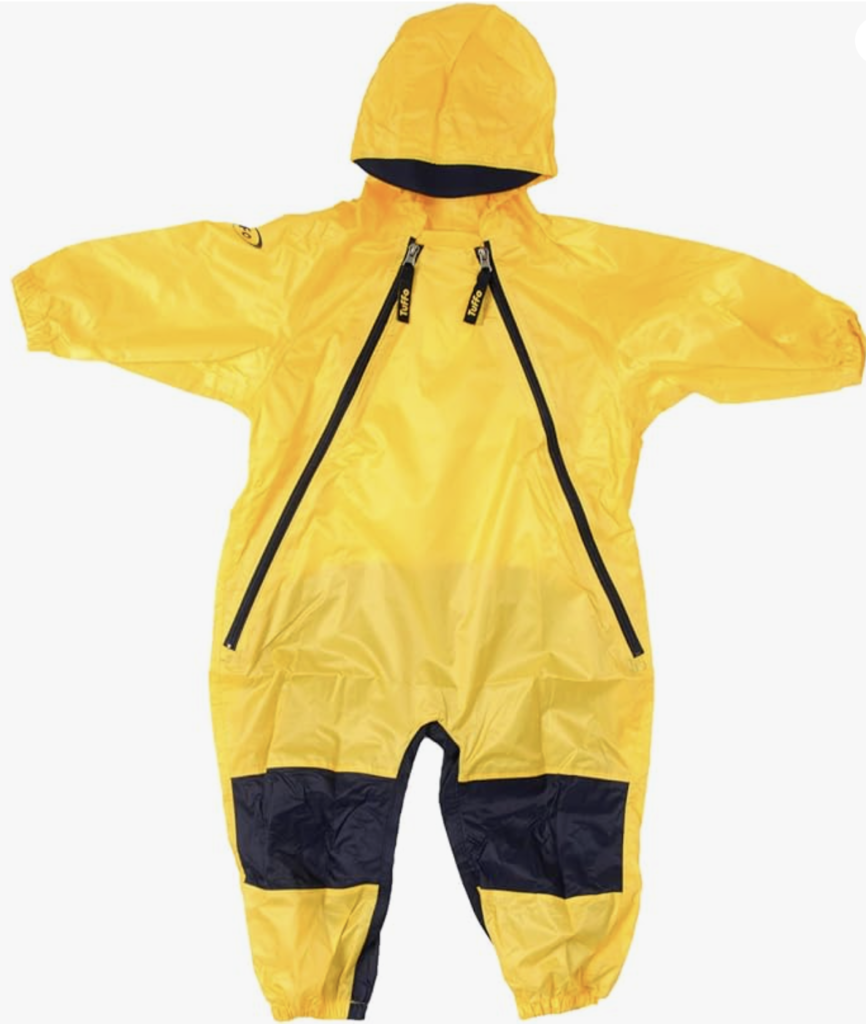
This inexpensive Tuffo rain suit has great reviews, is waterproof, and I’ve had a friend who has used them for multiple seasons for her kids. It’s thin so you can wear it in a warmer rain, or layer underneath it when it’s extra chilly.
Tihku 2 Piece Rain Set

We have this 2 piece rain set from Reima and it is great quality. It’s made out of a completely waterproof material and has welded seams which on normal zippers is typically what wets out first in really rainy weather. I love that it’s 2 pieces because we can just use the jacket, just the overalls, or both depending on what weather we are dealing with. If you live in a really rainy climate, I would highly recommend this set.
Discount code Hailey20 for 20% off
Mjosa Rain Suit

We have had a Mjosa jumpsuit for multiple seasons and the quality is incredible. This is not a fully waterproof suit, but is water repellant. I love this for a drizzly day or if it recently rained and the trail is kind of muddy.
Discount code Hailey20 for 20% off
12. INvest in Waterproof Kid Accessories
While it can be hard to spend money on things your kids are just going to outgrow, these waterproof accessories can make a big difference in keeping your kids happy on a wet, rainy hike.
Waterproof Hiking Shoes
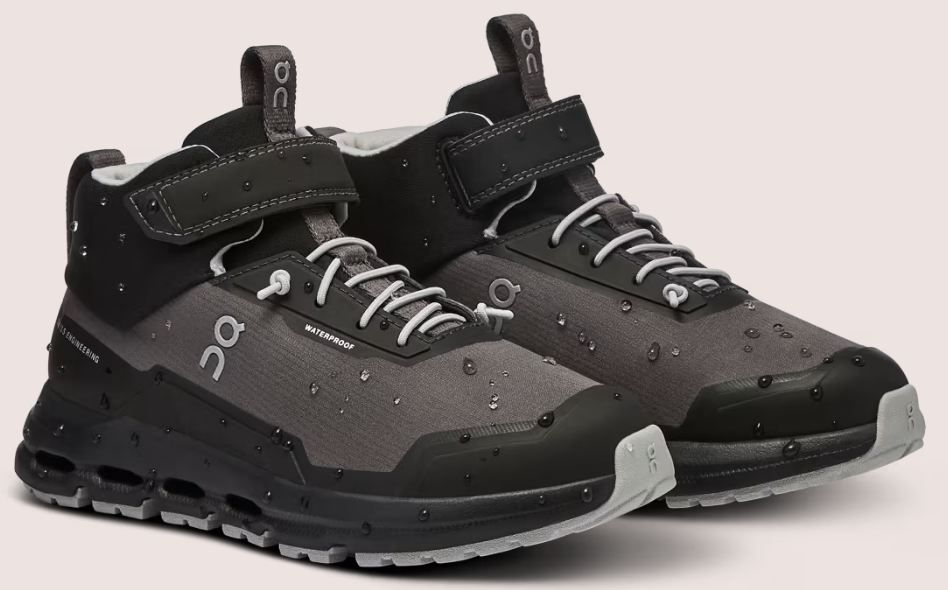
ON CloudHero Mid Toddler Hiking Boots: I love the On CloudHero Mid for the cooler months like fall and spring. These mid-cut, waterproof shoes have a great grip, so they’re stable on the trail. The speed laces are super convenient, letting my 4 year old get his shoes on and off with just one quick pull.
The upper is made from recycled materials, which is a nice eco-friendly bonus. They also have a toe cap and mudguard for extra durability which I love since my kids are always running on the trail and jumping from rock to rock. It also has a padded ankle collar adds comfort and support, along with the cushiony sole. Plus, the water-repellent coating keeps their feet dry if it’s rainy or they splash in a few puddles.
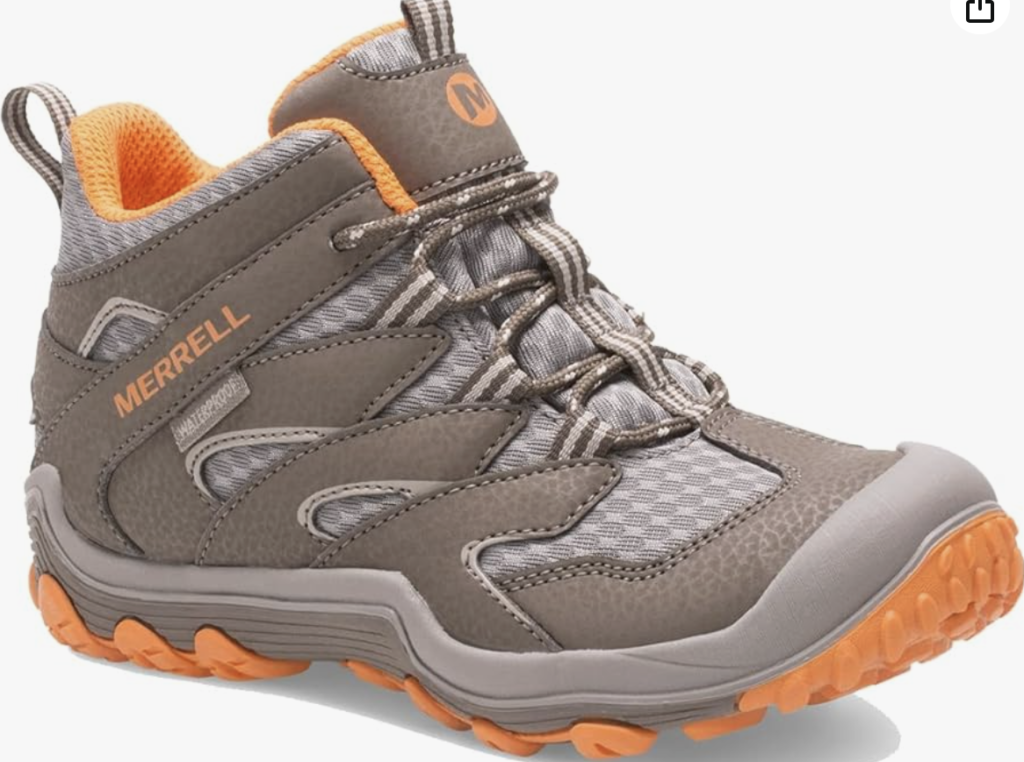
Merrell Chameleon 7 Access Mid Waterproof Hiking Boots: These hiking boots are great for kids on rainy hikes. They keep feet dry and comfy with their waterproof design, and the grippy soles help prevent slips on wet trails. The mid-cut style gives extra ankle support, and they’re lightweight and easy to put on. They are also a more budget friendly option.
Waterproof Mittens

Puro Waterproof Lined Mittens: These mittens have a fully waterproof design and a cozy lining that keeps little fingers toasty, even in wet weather. They’re easy to slip on and stay securely in place, so kids can splash, play, and explore without getting their hands soaked. I love how high they come up on the arm so water is less likely to get inside.
Discount Code: Hailey20 for 20% off
If you live somewhere with warmer rainy weather, you can check out these waterproof shell rain mittens that are not lined.
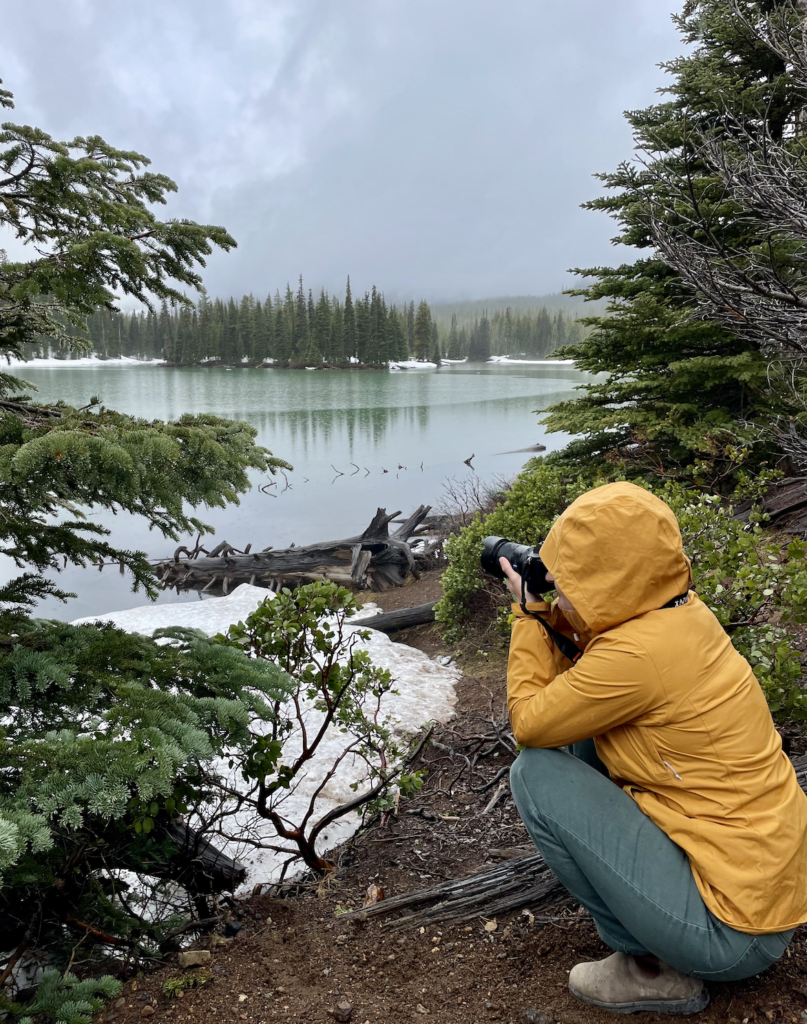
13. Embrace the Experience
Rain does not always seem like the best type of weather to get out and hike in, but you really do get to see the trail in a whole new “light” Everything is so fresh, kids get to puddle jump, and there’s less people on the trail than ever. You get to make the hike what you want it and as someone who lives in a desert climate, I have come to see hiking in the rain is as a real treat! With the right gear for hiking in the rain, your hike can really be a unique and enjoyable experience.
If you enjoyed this post about the best tips and gear for hiking in the rain, be sure to check out these other posts!

